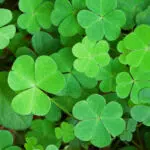Happy St. Patrick’s Day! Unless you’ve been living under the Blarney Stone you already know that March 17 is St. Patrick’s Day. Also affectionately known as St. Paddy’s Day, it’s the one day each year that everyone and anyone can call themselves Irish – if not by birthright, then in spirit. If you have been living under the Blarney Stone, lucky you! We bet you can share a thing or two about how a religious feast day commemorating the famed Irish patron saint who brought Christianity to Ireland ended up being a day celebrated almost globally, usually involving copious amounts of green beer and whisky shooters.
St. Patrick’s Day is celebrated in more countries around the world than any other single-day national festival, largely due to America’s enthusiasm for what many consider a holiday, although it is not an official holiday in America.
Parades are the heartbeat of St. Patrick Day festivities in America. This is not surprising, since the first parade held in St. Patrick’s honor took place in America, not Ireland, in 1601 in what is now St. Augustine, Florida. And the first actual St. Patrick’s Day parade also took place in America, in 1737, although it was pretty much just a stroll down the middle of a street in Boston by a few Irish Protestants to honor the patron saint of their motherland. The first St. Patrick’s Day parade in New York City was held in 1762, 14 years before the signing of the Declaration of Independence, and was organized by Irish troops serving in British colonies. Today the world’s biggest St. Patrick’s Day celebration is the annual parade in New York City, where more than two million spectators line the parade route, all claiming to be Irish, at least for the day.
When is St. Patrick's Day 2026?
The luck of the Irish and all things green are celebrated on St. Patrick’s Day, which is on March 17 every year. Initially, a day to honor St. Patrick, the patron saint of Ireland, over time the holiday has evolved into a fun and festive celebration of Irish culture.
History of St. Patrick's Day
The Catholic Church first recognized March 17 as a feast day commemorating Ireland’s best-known and most beloved patron saint, Saint Patrick, in 1631. With rare exceptions, March 17 always fell during the Christian holy season of Lent, when alcohol consumption was prohibited by the Church. But on Saint Patrick’s feast day, the ban on alcohol was lifted, presumably because it was a feast day, and feasting usually included alcohol.
Saint Patrick’s feast day in Ireland remained a traditionally pious religious day. Irish laws eventually curtailed the use of alcohol during the feast on March 17 by mandating that all pubs remain closed on that day. This was Irish law until it was repealed in the 1970s. The day continued to be and still is observed as a feast day by the Church of Ireland, the Catholic Church, the Anglican Communion, the Eastern Orthodox Church, and the Lutheran Church. However, when the Irish government became aware of a growing interest in St. Patrick’s Day by American tourists in the mid-1990s, they launched a national campaign to convert America’s fascination with St. Patrick’s Day and Irish culture into tourist dollars.
Meanwhile, in America, more than one million Irish men, women, and children were immigrating through Ellis Island in the 1800s. They faced oppressive discrimination in America, leaving most unemployed and living in severe poverty in New York City tenements. As their numbers grew, the Irish discovered strength in unity and rallied together to celebrate their beloved patron saint with a parade every March 17. The practice of St. Patrick’s Day parades and festivals followed Irish immigrants as they made their way across America’s heartland and into the deep south, seeking cheap farmland and job opportunities.
As for our obsession with heavy drinking on St. Patrick’s Day? This appears to be a modern American phenomenon not firmly rooted in Irish tradition. But the Irish are not complaining. When they first came to America, the Irish were rejected and despised. Now everyone wants to be Irish on St. Patrick’s Day. How great is that? The more Irish on St. Patrick’s Day, the merrier.
“Erin go Bragh!”
St. Patrick's Day timeline
According to records kept by the American colony that later became St. Augustine, Florida, the first parade in honor of St. Patrick is held in this year.
March 17 is declared a feast day by the Catholic Church to honor the patron saint of Ireland.
U.S. President Harry S. Truman attends NYC‘s St. Patrick’s Day parade, helping to fight racial prejudice against Irish immigrants.
Chicago, Illinois uses 60 pounds of green dye to become the first city to successfully dye its river bright green on St. Patrick’s Day.
The global COVID-19 pandemic cancels the world’s largest St. Patrick’s Day parade in New York City for the first time in its 259-year history.
Traditions For St. Patrick's Day
The theme for St. Paddy’s Day is Irish and the color green, so drinks, food, and parties are all centered around this. Traditionally, green dressing and green-colored food are prepared to get into the spirit of the day. Irish beer is also very popular, so pubs and clubs have special deals and host parties. Celebrations are taken to the street with massive parades in major cities all over America.
St. Patrick's Day By the Numbers
40–60 pounds – the amount of green dye dumped in the Chicago River on St. Patrick’s Day.
3rd – most popular drinking day in America.
70% – the percentage by which cabbage shipments increase around St. Patrick’s Day.
57% – the percentage of Americans who celebrated St. Patrick’s Day in 2020.
79% – the percentage of people who planned to don green attire for the holiday in 2020.
$40 – the average spending per person on St. Patrick’s Day.
819% – the percentage increase in the serving of Guinness on St. Patrick’s Day.
284 – the number of years that St. Patrick’s Day has been celebrated in America.
30% – the percentage of Americans who celebrate by cooking an Irish meal.
St. Patrick's Day FAQs
What does St Patrick Day mean in Ireland?
St. Patrick was one of Ireland’s patron saints and is credited with bringing Christianity to Ireland during the fifth century.
How did St. Patrick’s Day become a drinking holiday?
In Ireland, the anniversary of St. Patrick’s death is considered a feast holiday, and feasts usually include drinking. During this time, Irish drinking restrictions were temporarily lifted and, over time, alcohol became associated with the day.
What is the real reason for St. Patrick's Day?
The day celebrates St. Patrick and the arrival of Christianity in Ireland, as well as Irish heritage and culture.
HOW TO CELEBRATE ST. PATRICK'S DAY
Be Irish for the day
Get your green on! Everyone is an honorary Irish lad or lass on St. Patrick’s Day, so just go with it. Today, everyone looks stunning in green.
Go watch a parade
The biggest party on St. Patrick’s Day by far is always the parade because that is how early Irish immigrants first celebrated their patron saint in America: with a parade. It’s a family affair with glitter, glamour, fiddlers, cloggers, and lots and lots of green. A robust St. Patrick’s Day parade gets the party started and the day only gets better from there.
Hunt for leprechauns
Legend has it that if you catch a leprechaun, the little fella has to surrender his pot of gold to you. So why not grab a couple of butterfly or fishing nets and take your wee lads and lasses out for a leprechaun hunt and bring home the gold. But be ye forewarned. Leprechauns are wickedly clever creatures known to trick their captors out of receiving the gold. Your best bet is to just keep quiet, not answer any questions the leprechaun may ask you, take your newfound fortune, and run. Quickly. Good luck.
5 Facts To Know On St. Patrick's Day
St. Patrick was not an Irishman
He was born Maewyn Succat around 385 A.D., son of a Christian church deacon and wealthy family, in Britain, which was under the rule of the Roman Empire at that time.
He arrived in Ireland as a slave
The rich kid was kidnapped from Britain at the age of 16 by a band of raiders who enslaved him as a shepherd in Gaelic Ireland for six years, during which time he converted to Christianity.
He was a saint, but not really
Although he is known as Saint Patrick and is the most beloved of all patron saints of Ireland, he has never been formally canonized as a saint by the Catholic Church.
St. Patrick did not rid Ireland of snakes
He could not have done this because there have never been any snakes on the island nation of Ireland — this is a folklore legend.
Four-leaf clovers are never shamrocks
The four-leaf clover being lucky has nothing to do with St. Patrick — legend has it that St. Patrick used a green plant with three leaves, commonly called a shamrock, to teach the Christian concept of the Holy Trinity — only a three-leaf clover can be a shamrock.
WHY WE LOVE ST. PATRICK'S DAY
Today everyone is Irish
Regardless of your birth heritage, on St. Patrick's Day, everyone is welcome to identify as Irish, and the Irish are just fine with that. If not out of a sense of awe at the history and survival of the Irish diaspora in America during the 1800s, then be Irish today as part of the lively spirit, smiling eyes, and hearty laughter that is everywhere on St. Patrick’s Day.
Leprechauns
Who doesn’t love a holiday that includes wee little folk dressed in odd clothing with magical powers and a pot of gold hidden at the end of every rainbow? What do leprechauns have to do with St. Patrick or St. Patrick’s Day? Nothing that we know of, but somehow Ireland’s fabled fairies with magical powers made their clever little way into the party and never left. Irish Celtic legend claims leprechauns are cranky souls responsible for mending the shoes of the other fairies, which may account for the big buckles on their tiny little shoes. But we think leprechauns just like the bling of a big shiny shoe buckle.
Going green
Green is hip. Green is cool. Everyone wants to be green or go green these days. St. Patrick’s Day is the greenest day of the entire year. It’s the one day when we can deck ourselves head to toe in tacky garb of all shades of green, paint our nails green, or dye our hair green — and no one bats an eye. Do this on any other day and people will avoid you like the green plague.
St. Patrick's Day dates
| Year | Date | Day |
|---|---|---|
| 2026 | March 17 | Tuesday |
| 2027 | March 17 | Wednesday |
| 2028 | March 17 | Friday |
| 2029 | March 17 | Saturday |
| 2030 | March 17 | Sunday |
















